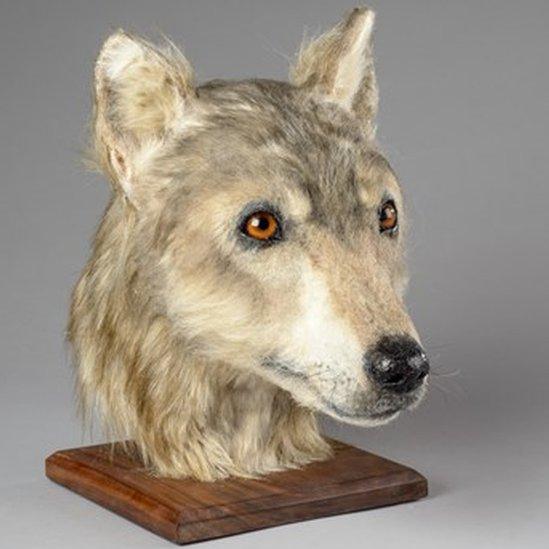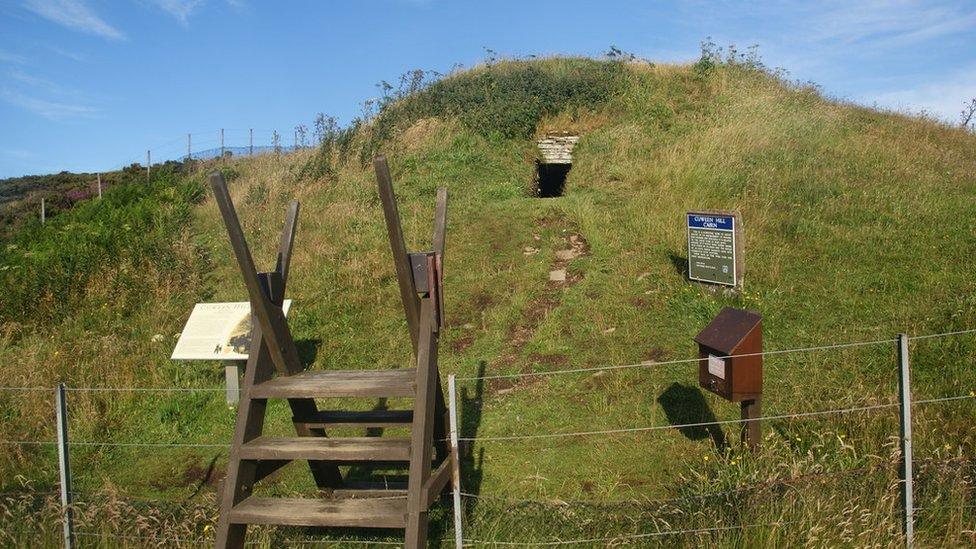Neolithic dog's head recreated using Orkney skull
- Published

The model was created by a forensic artist who normally recreates human heads
The head of a Neolithic dog has been recreated using a skull discovered in a cairn tomb in Orkney.
A forensic artist used 3D images of the 4,000-year-old animal to build the model - complete with realistic muscle, skin and hair.
The animal is believed to have been the size of a large collie with features similar to a European grey wolf.
The skull was one of 24 discovered when the chamber at Cuween Hill was excavated in 1901.
It is believed the dogs were placed there more than 500 years after the passage tomb was built.

The skull was one of 24 discovered in a chamber tomb at Cuween Hill
The model was built by forensic artist Amy Thornton using 3D images produced by Historic Environment Scotland (HES) and Edinburgh University's Royal (Dick) School of Veterinary Studies.
Ms Thornton used identical techniques to those she would normally use to recreate a human head.
She said: "The reconstruction was originally created in clay using traditional methods, with a 3D print of the Cuween Hill skull as the base to build the anatomy on to.
"The completed sculpture was then cast in silicone and finished with the fur coat resembling a European grey wolf, as advised by experts.
"The resulting model gives us a fascinating glimpse at this ancient animal."
Pets and guards
Steve Farrar, interpretation manager at HES, said the model would help "to better relate to the people who cared for and venerated these animals".
He said: "Just as they are treasured pets today, dogs clearly had an important place in Neolithic Orkney, as they were kept and trained as pets and guards and perhaps used by farmers to help tend sheep.
"But the remains discovered at Cuween Hill suggest that dogs had a particularly special significance for the farmers who lived around and used the tomb about 4,500 years ago. Maybe dogs were their symbol or totem, perhaps they thought of themselves as the 'dog people'.
"While reconstructions have previously been made of people from the Neolithic era, we do not know of any previous attempt to forensically reconstruct an animal from this time."